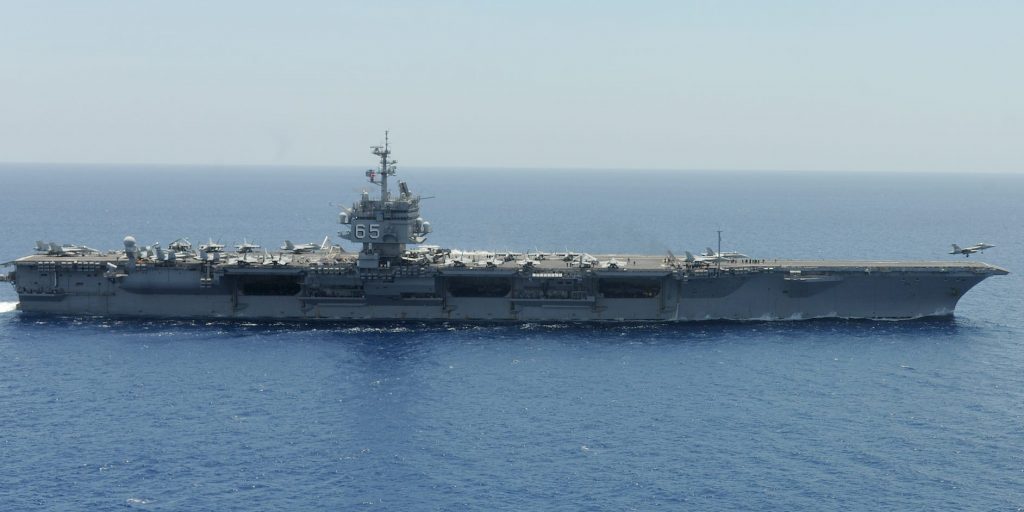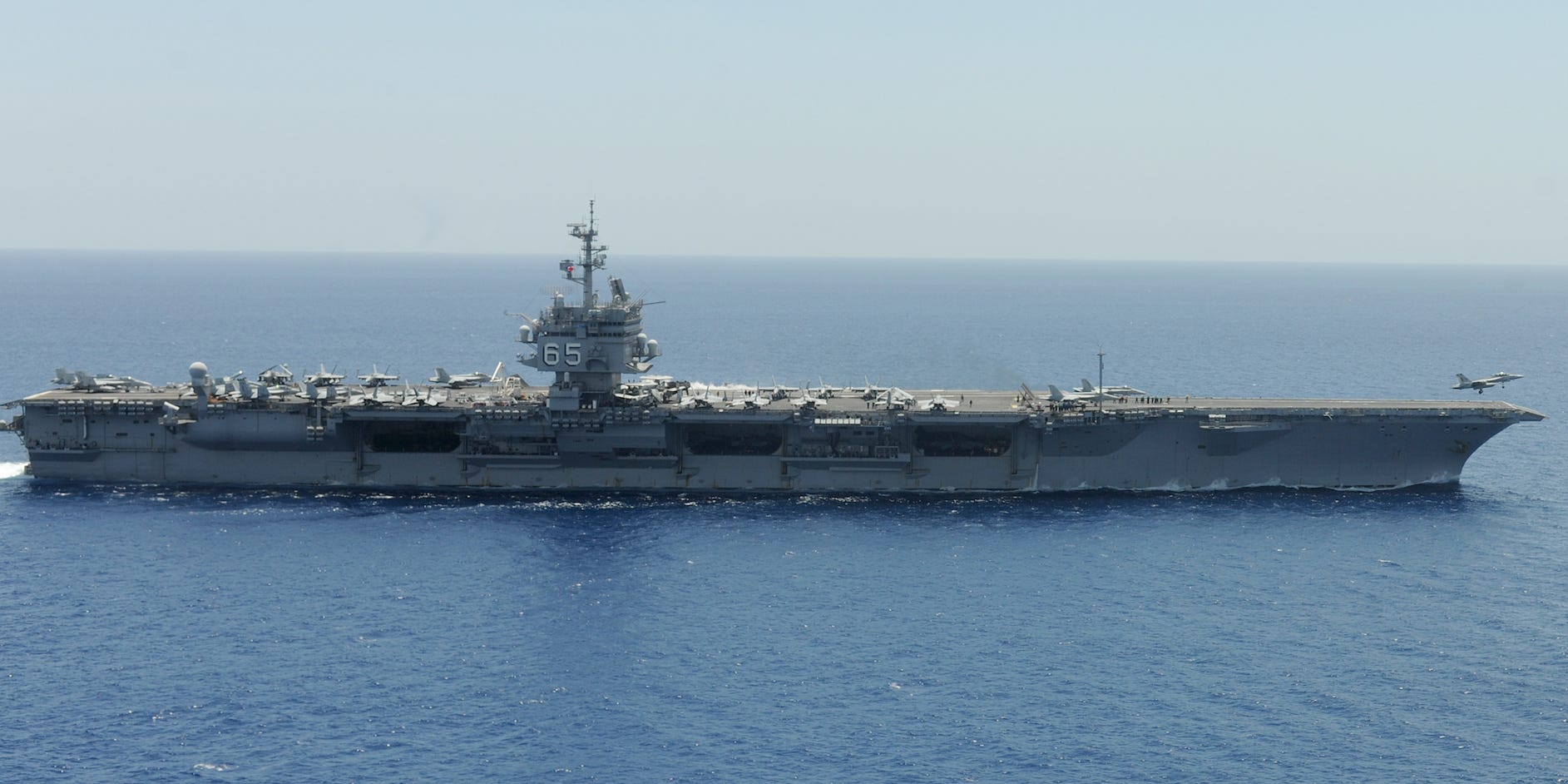
US Navy/Stacy Laseter
- When USS Enterprise was commissioned in 1961, it was the first nuclear-powered aircraft carrier to enter service.
- Enterprise was deactivated in 2012 and decommissioned in 2017, but it's been in storage for years.
- The Navy is still deciding how to dismantle the carrier, and a small team is preparing it for its final move.
- See more stories on Insider's business page.
The Navy estimates that more than 100,000 sailors served aboard the USS Enterprise during the aircraft carrier's five decades of service.
The world's first nuclear-powered flattop, the "Big E" was commissioned in 1961 at Newport News Shipbuilding and was the eighth Navy vessel to bear the name Enterprise.
Its service life included nearly every US conflict from the Cold War through the global war on terror. It responded to the Cuban missile crisis in 1962 and was the first to launch strikes in Afghanistan during Operation Enduring Freedom in 2001.
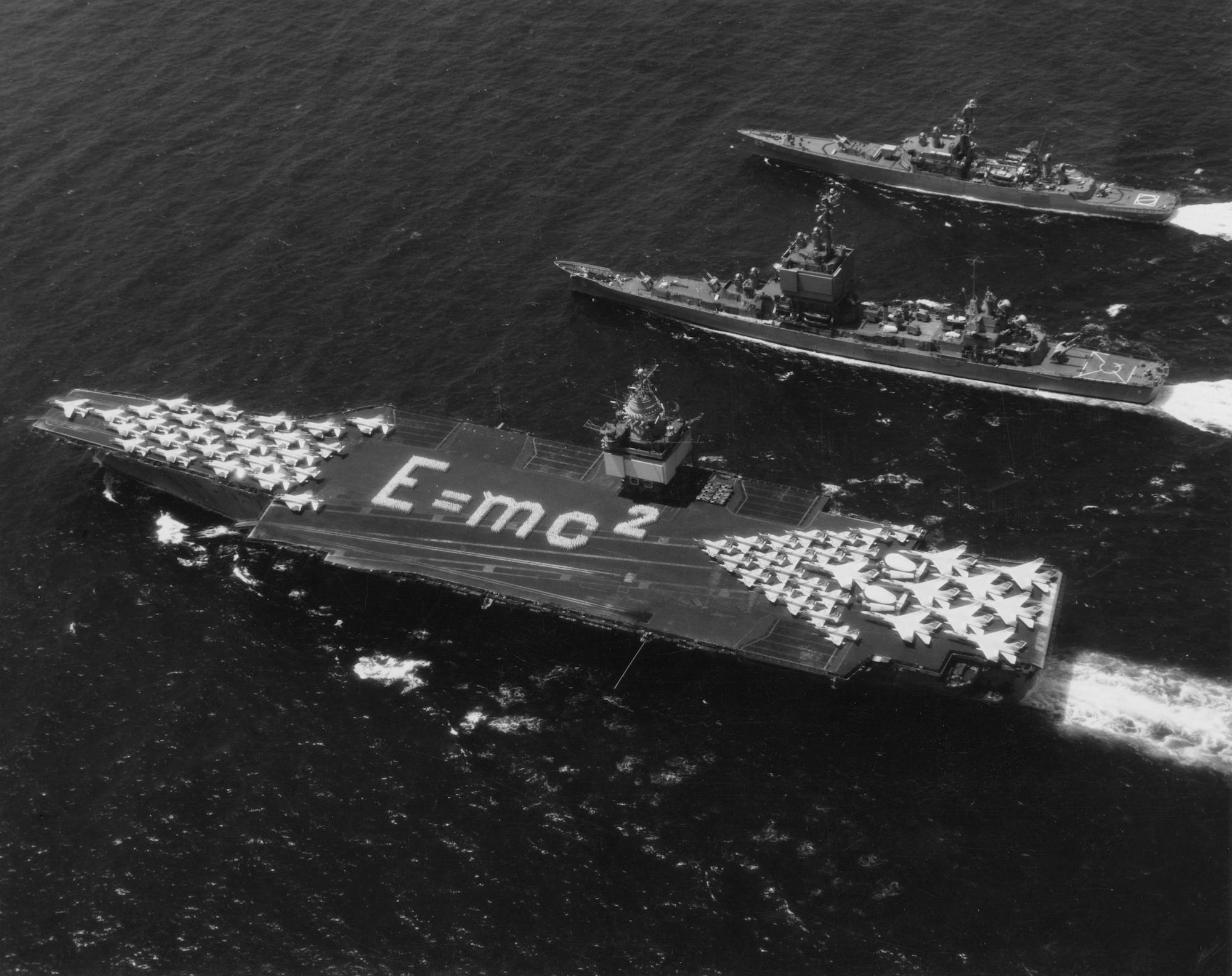
Keystone/Getty Images
For nearly three years, the carrier – now called "Ex-USS Enterprise" after its decommissioning in February 2017 – has waited out its final days where its life began as the Navy determines the best way to dismantle what's left of it.
About 25 workers spend their days maintaining and inspecting the carrier, defending the vessel from water intrusion, flaking paint, leaks, and other threats, and working to prepare it for a move to its final destination, said Mike Smith, who manages Newport News Shipbuilding' Ex-Enterprise program.
"It's an empty ship," Smith told Insider.
No end in sight
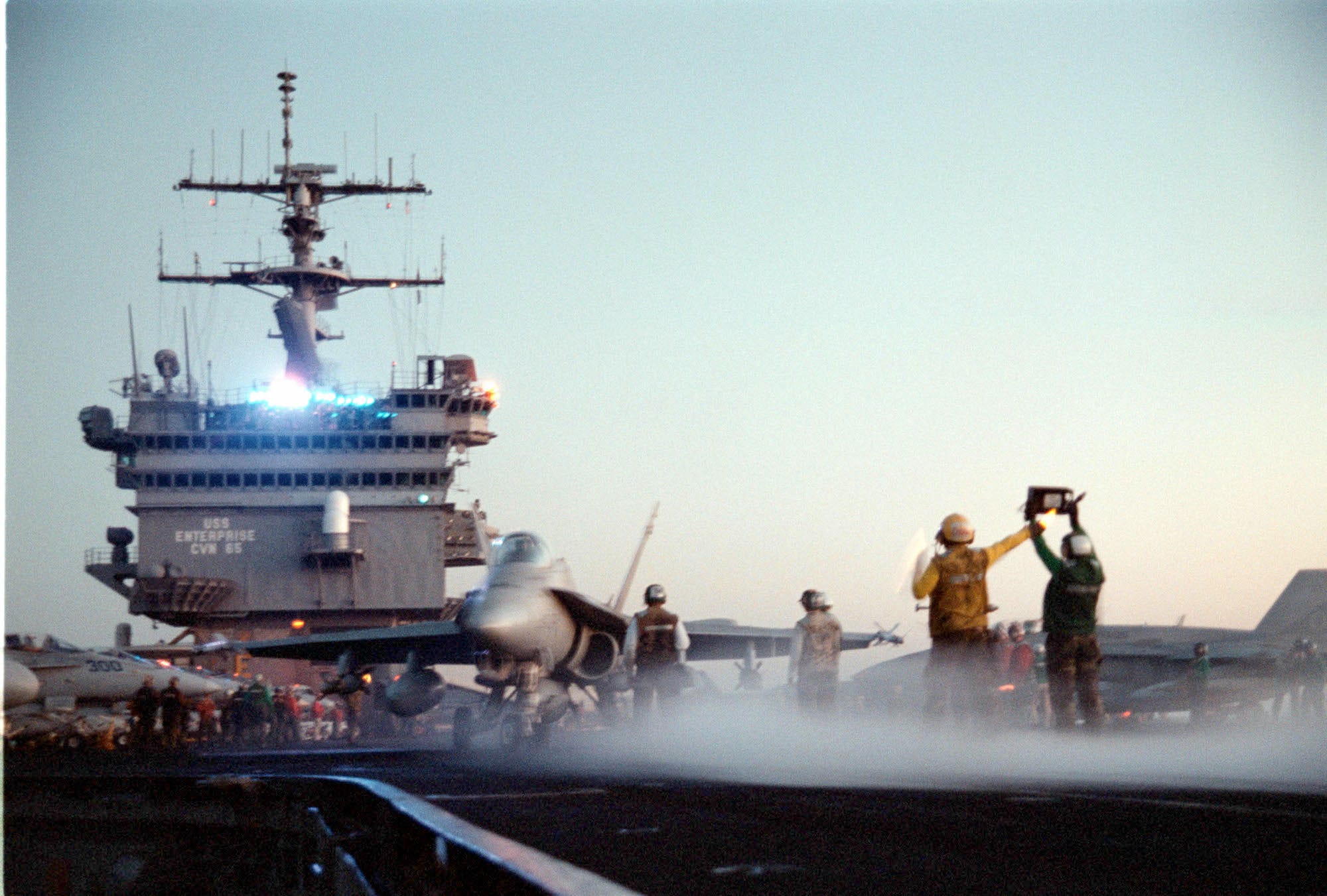
US Navy/Getty Images
The flattop has been at the shipyard for nearly a decade after completing its final deployment in 2012.
To prepare it for decommissioning and deactivation, workers first had to drain its nuclear reactors, a process that ended in 2018.
That year, the Navy shut down bids from commercial contractors to handle dismantling the reactor amid an ongoing dispute with the Nuclear Regulatory Commission. At the time, the Navy said it needed more time to develop "more technically executable, environmentally responsible" approaches, and it awarded Newport News Shipbuilding a $34 million contract to store the ship through the end of September 2021.
The Navy's Puget Sound Naval Shipyard in Washington state has historically handled disposal of the service's nuclear-powered cruisers and submarines, but that shipyard estimated it couldn't get to Ex-Enterprise until 2034 because of other work it already expects to do, Naval Sea Systems Command spokesperson Jamie Koehler told Insider.
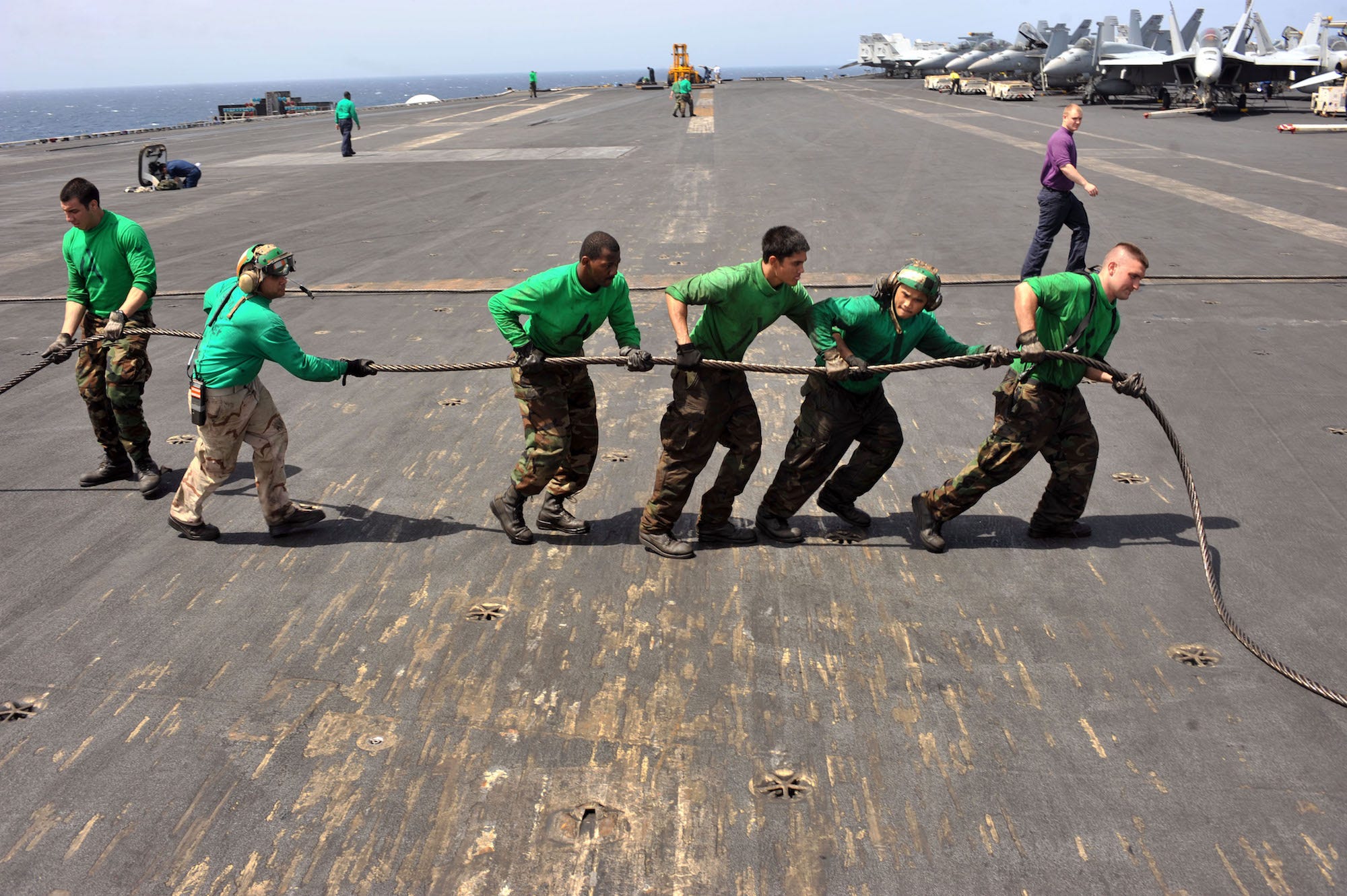
US Navy/Seaman Jared M. King
A Government Accountability Office report in 2018 estimated that a commercial contractor could get the work done faster and potentially save millions. The Navy has identified three alternatives involving commercial shipyards doing all or part of the work, which includes packaging the vessel's eight reactor plants for disposal.
In the meantime, the Navy continues to spend more money keeping the Ex-Enterprise mothballed at the shipyard in Virginia, where the future USS Enterprise - the third Ford-class aircraft carrier - is already taking shape.
In April, Newport News Shipbuilding was awarded a $7.5 million contract modification for continued storage of Ex-Enterprise. That contract was extended in July at no additional cost until March 31, 2022, Koehler told Insider in an email.
"An additional contract extension, if required, will be negotiated at the appropriate time," Koehler said.
The command expects to publish its environmental impact statement for public comment in spring 2022 with a formal decision planned for 2023, Koehler said.
'Big E' lives on
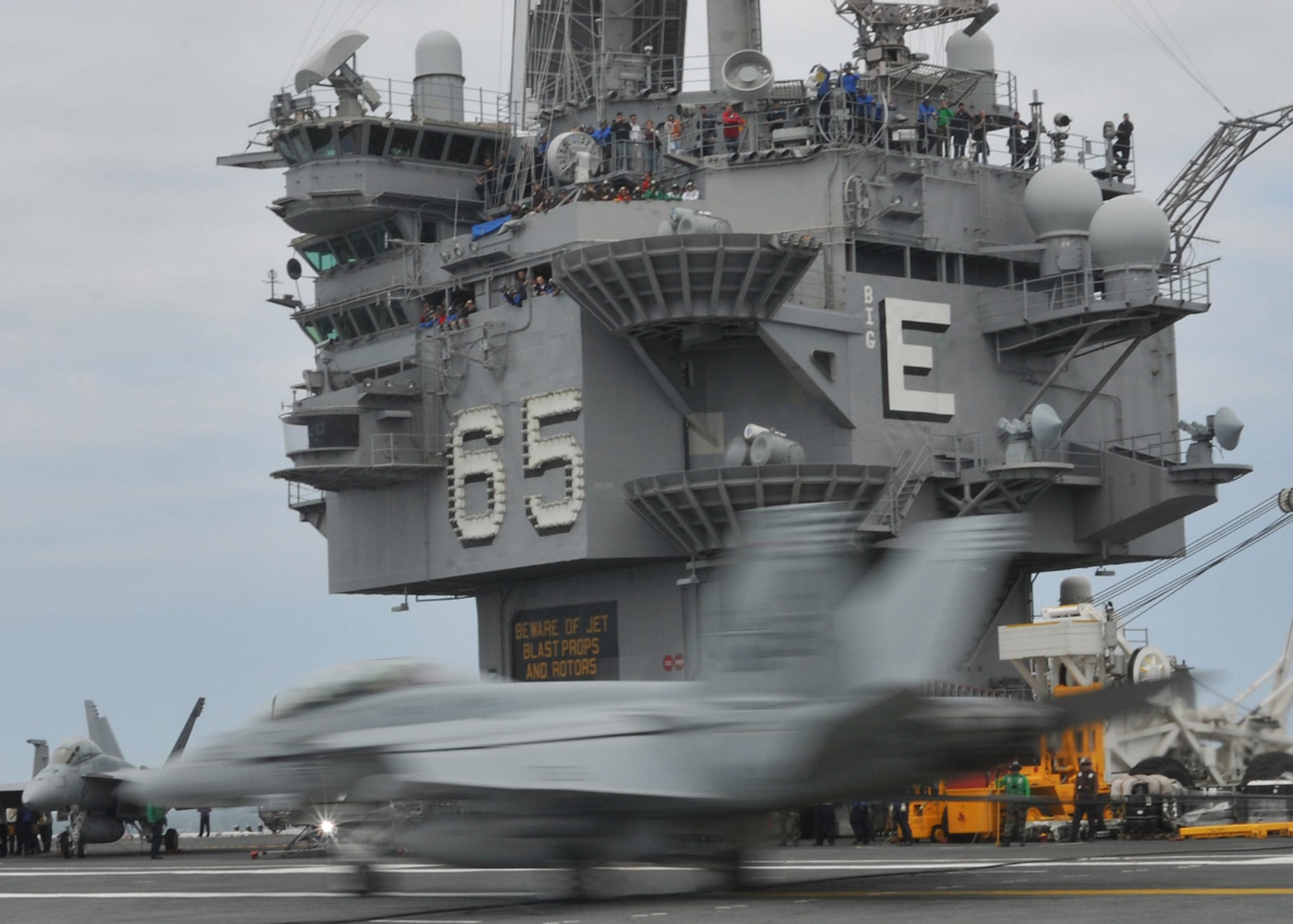
US Navy/PO2 Travis S. Alston
The Ex-Enterprise is now a very quiet place, but parts of the Navy's first nuclear-power aircraft carrier will live on elsewhere in the service.
The carrier made a star turn in the 1986 film "Top Gun," and years ago naval historians removed more than 70 artifacts from the carrier, including the ship's bell and portholes that will be installed on the future USS Enterprise, according to Jeffrey Bowdoin and Caitlin Nowak, curators with Naval History and Heritage Command.
Historians found "Star Trek" movie posters and a model of the Starship Enterprise. They also saved a pair of fuzzy dice that "Top Gun" producer Jerry Bruckheimer hung in the carrier's bridge.
"I think that offers us a really interesting look at how the Navy fits into American popular culture and films," Nowak told Insider.
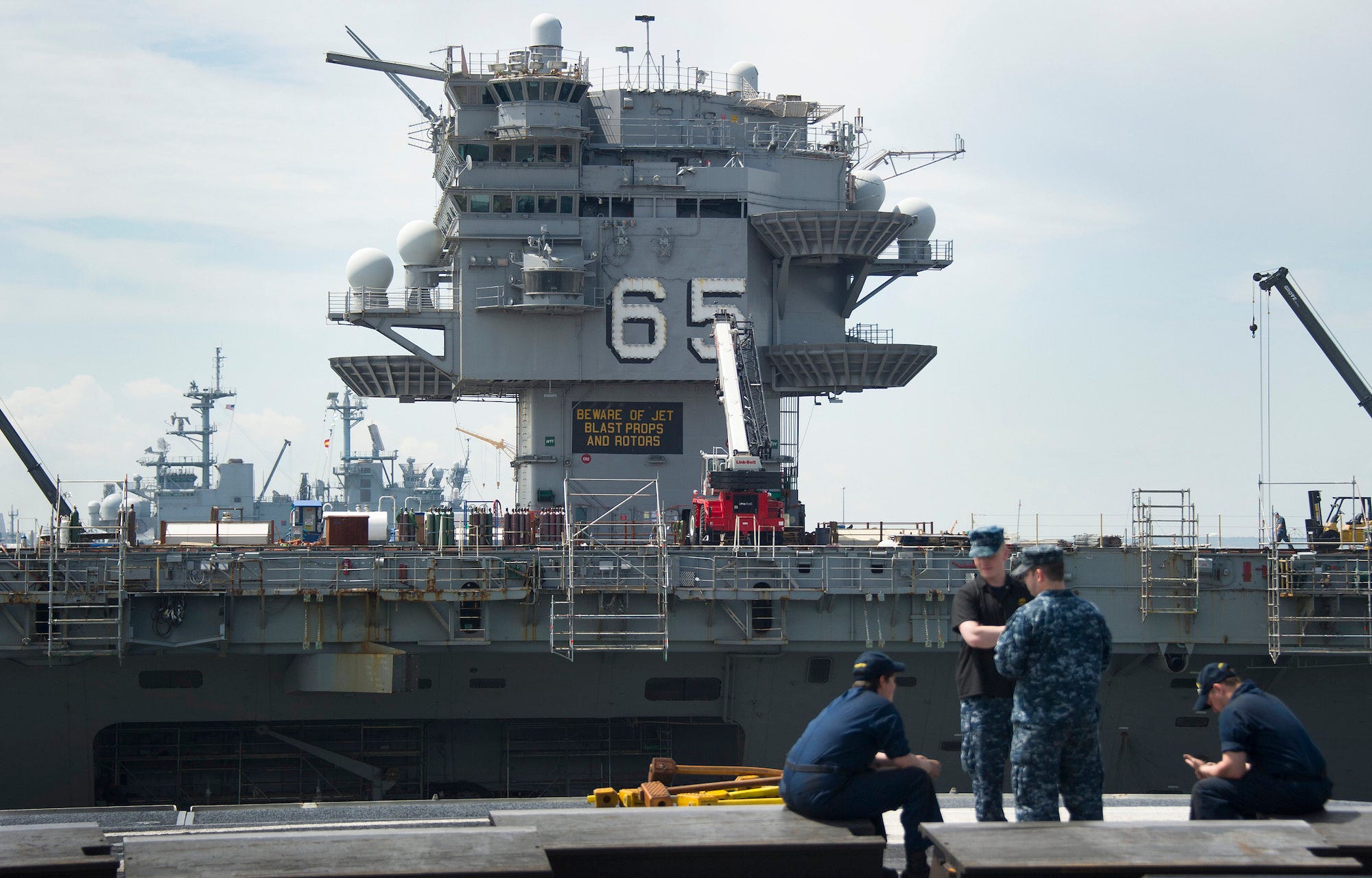
JIM WATSON/AFP via Getty Images
The Navy has also harvested parts of the carrier for installation on other vessels. Smith said he sees opportunity for the Navy to focus more on what can be salvaged and refitted on future ships, especially as the Nimitz-class carriers near the end of their service lives.
"There will be a lot more equipment that can be recapitalized, removed from the ship, refurbished, and used on the other in-service carriers of the fleet," he said.
For an aircraft carrier that inspired generations of sailors and movie-goers, there's little left that's "super sexy" about Ex-Enterprise now, Smith said.
It may employ a skeleton crew, but storing the 60-year-old carrier requires more than turning out the lights and sealing up hatches.
The caretakers have installed a temporary fire main, which is fed by the James River, and a dehumidification system to keep moisture down. Services that go to the ship - power, water, sanitation - come from the shore. Crews inspect fire and water-intrusion alarms to make sure they're operational and pump out any water.
"We're effectively an extension cord and a garden hose to the ship," Smith said.
Ex-Enterprise is currently in dry dock, where it was moved to make room for the USS Gerald R. Ford earlier this year, Smith said.
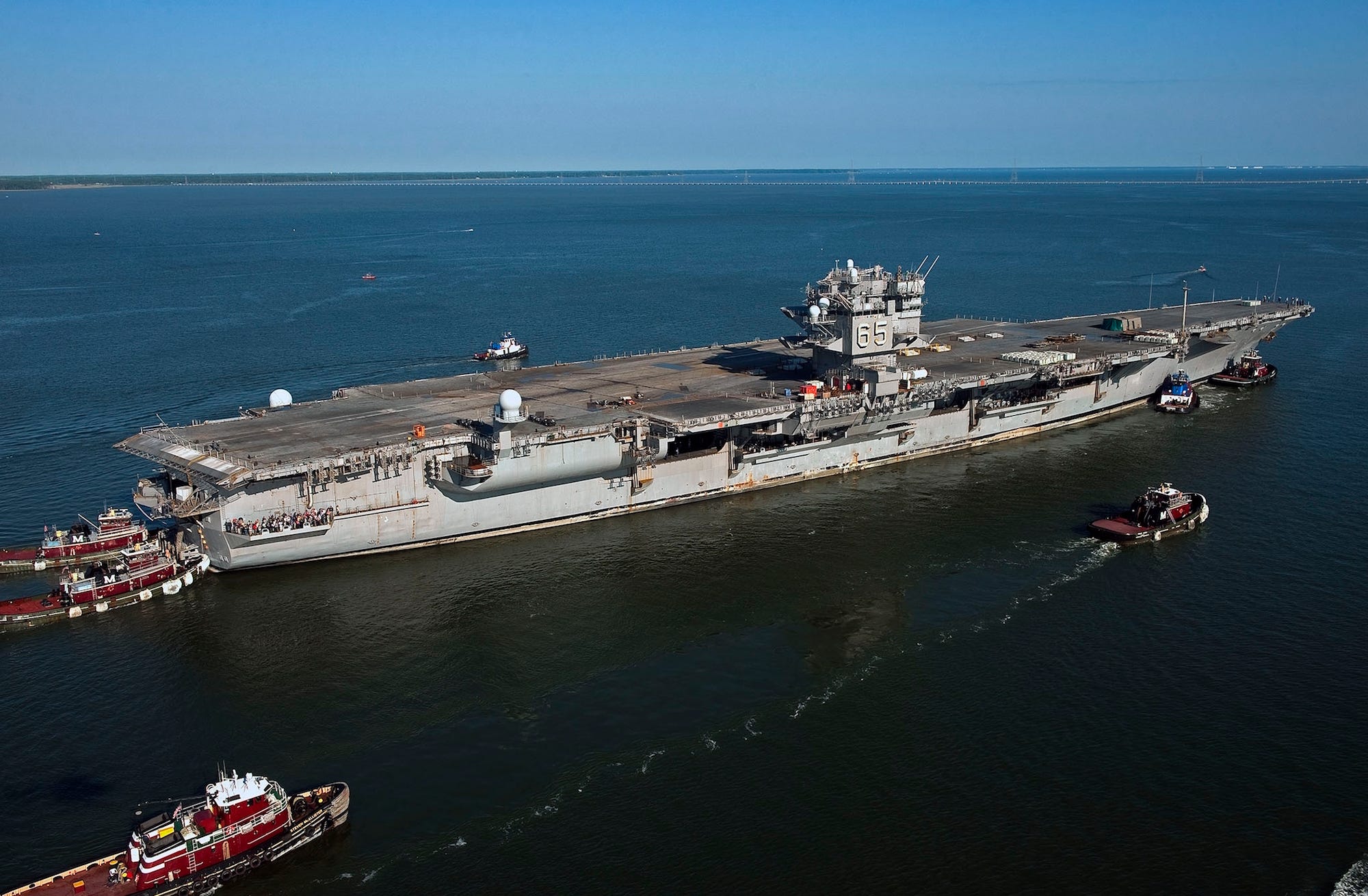
Huntington Ingalls Industries/John Whalen
While there, workers are installing 500 exterior studs as connection points for tow lines that will eventually be added. The shipyard is also modifying another pier for Ex-Enterprise to move to in the future.
When the carrier is in the water, crews must check to make sure that a system to protect the hull from corrosion is working. They also have to keep an eye on the carrier's trim and list.
Even in dry dock, water is a problem.
"I don't think people would think about water intrusion," Smith said. "That's a huge effort to make sure that when a heavy rainstorm comes that you're not filling the ship up with water."
Contractors have also touched up flaking paint and patched "a lot" of holes where rust has eaten through, Smith added.
"No one expected the ship to sit here that long," Smith said.
